粉煤灰吊装行车设计(含CAD零件图装配图)
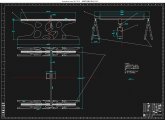
粉煤灰吊装行车设计(含CAD零件图装配图)(论文说明书9000字,CAD图6张)
摘要
由于科技的进步粉煤灰的产量也越来越多。粉煤灰通常是燃煤过程中产生的一种副产品,在建筑、水泥、道路建设等领域有广泛的应用。但是粉煤灰作为一种工业固废,其粉尘对环境会造成一定的破坏,因此通过研究粉煤灰吊装行车可以降低对环境产生的影响。吊装行车通常用于在工厂或建筑现场中将粉煤灰从一个地点转移到另一个地点,以便进行处理、储存或运输。这些行车设备通常具有足够的承载能力和灵活性,以应对不同工作场景下的吊装需求。此次我所研究的课题就是设计一种能够搬运粉煤灰的龙门式行车,主要设计内容是龙门式行车的结构和吊箱设计,包括了龙门架结构的设计和计算,横梁结构的设计和计算,小车结构的设计和计算,各零部件的选择和计算。
关键词:龙门式行车;吊装;粉煤灰
summary
Due to the progress of science and technology, the production of fly ash is also increasing. Fly ash is usually a by-product of the coal burning process and has a wide range of applications in construction, cement, road construction, and other fields. However, fly ash is a kind of industrial solid waste, and its dust will cause certain damage to the environment, so the impact on the environment can be reduced by studying fly ash hoisting cranes.Fly ash is usually a by-product of the coal burning process and has a wide range of applications in construction, cement, road construction, and other fields. Crane cranes are typically used to transfer fly ash from one site to another in a factory or construction site for processing, storage, or transportation. These cranes usually have sufficient load-bearing capacity and flexibility to cope with the lifting needs of different working scenarios. The main design content is the structure of the gantry crane and the design of the gondola, including the design and calculation of the gantry structure, the design and calculation of the beam structure, the design and calculation of the trolley structure, and the selection and calculation of each component. [资料来源:http://doc163.com]
Keywords: gantry crane; Hoisting; Fly ash
1.2龙门式行车设计的总体方案
本行车用于小型粉煤灰堆积处,工作级别低。设计所用于80-100m^2的粉煤灰堆,横梁长约8m左右,支座承A字型两支架之间约1.5m,两支座跨度约8m;设吊钩和装煤箱,装货箱约3吨装载量;小车运行速度30m/min。
1.3横梁的设计
横梁的长度为10m,主要构成是主梁、小车导轨和滑轮,主梁的宽度和厚度要与材料的选用和横梁中间点所受最大应力相符,主梁与小车轨道采用一体式焊接,导轨是横梁上的重要组成部分,其分布形式直接影响到横梁的刚度和稳定性。轨道的长度会略低于横梁的长度,筋板是横梁内部的重要组成部分,通过合理布置加强筋的形式提高横梁的局部刚度。横梁两端通常会设计有滑轮,这些滑轮在轨道上滚动,使得横梁能够在轨道上移动。滑轮的材料需要具有良好的耐磨性和强度,通常会选择高强度的钢材作为滑轮的材料[3]。滑轮的尺寸需要根据横梁的重量和轨道的宽度来确定,以确保滑轮能够承受横梁的重量并在轨道上稳定运行
滑轮的布局也是一个重要的设计因素,需要考虑滑轮的数量和位置,以实现横梁的平稳运行和转向。滑轮与轨道的配合需要精确,以减少滑轮在运行过程中的摩擦和磨损,设计过程中还需要考虑到设备的安全性、可靠性、经济性等因素。
[资料来源:http://doc163.com]
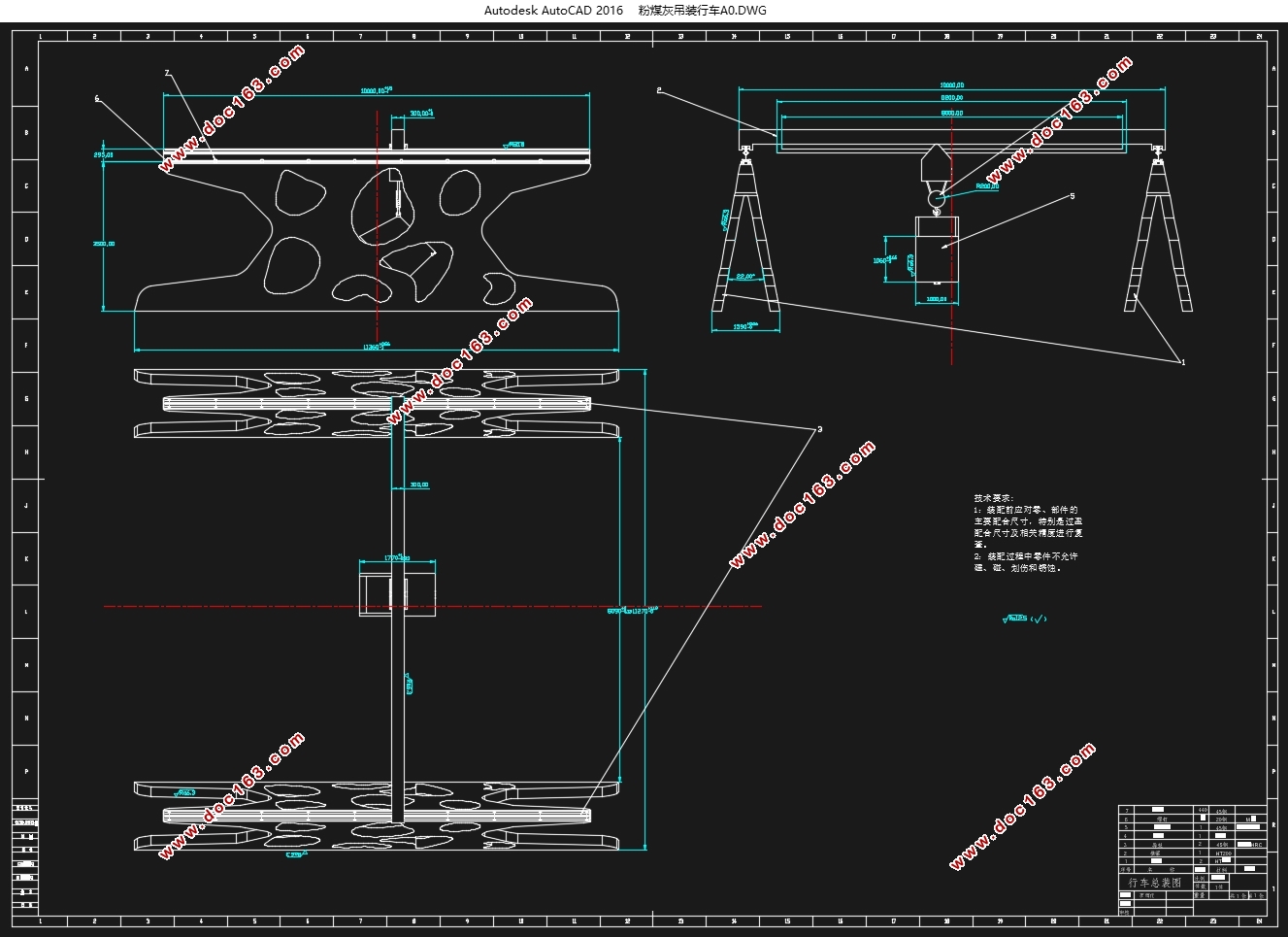

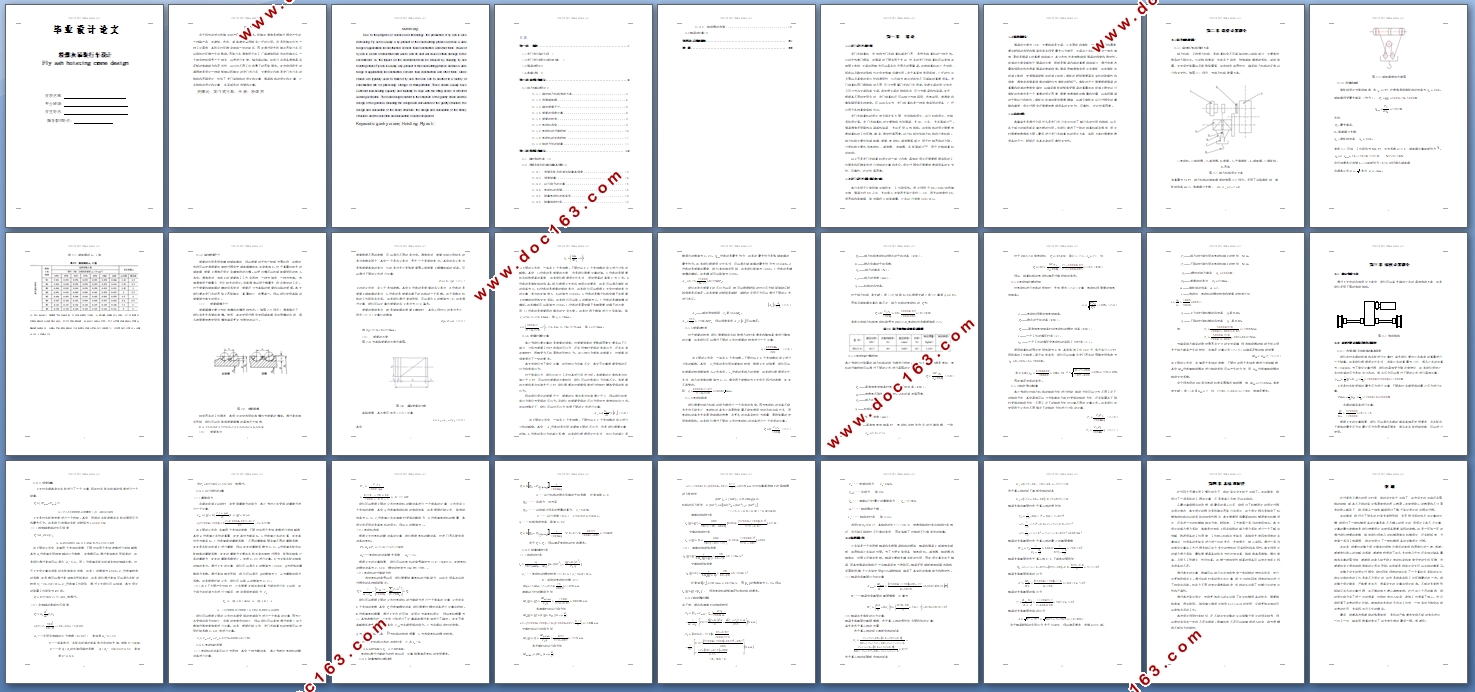
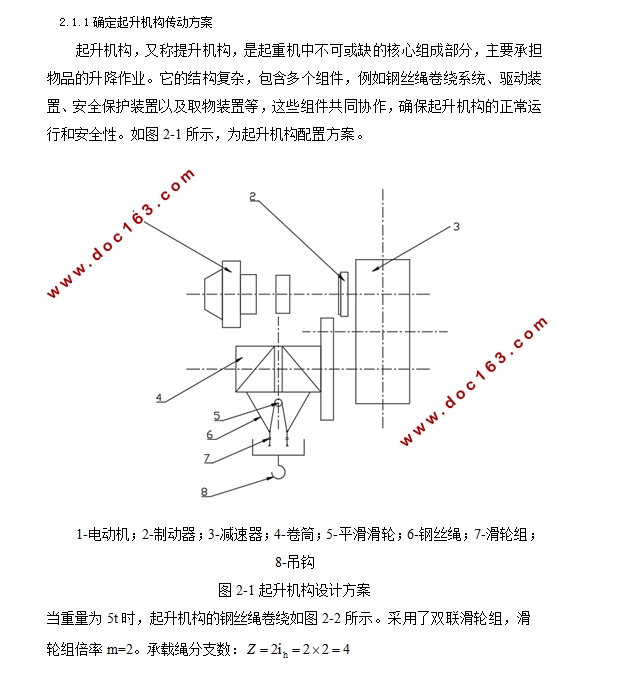
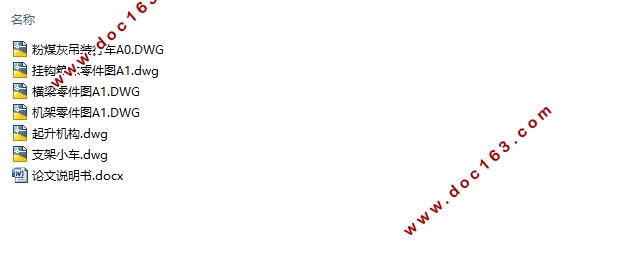
[版权所有:http://DOC163.com]
目录
第一章 绪论 1
1.1龙门式行车的介绍 1
1.2龙门式行车设计的总体方案 1
1.3横梁的设计 2
1.4本章小结 2
第二章 选型计算部分 3
2.1起升机构的设计 3
2.1.1确定起升机构传动方案 3
2.1.2选择钢丝绳 4
2.1.3确定卷筒尺寸 6
2.1.4卷筒的强度计算 8
2.1.5 卷筒的转速 9
2.1.6 电动机选型 9
2.1.7 电动机的过载校核 10
2.1.8 电动机的发热校核 11
2.1.9 制动力矩的验算 11
第三章 结构计算部分 13
3.1 确定传动方案 13
3.2 选择车轮及轨道并验算其强度 13
3.2.1 选择车轮及轨道并验算其强度 13
3.2.2 强度验算 14
3.2.3 运行阻力的计算 15
3.2.4 电动机的选择 15
3.2.5 验算电动机发热条件 16
3.2.6 验算起动时间 17
3.2.7 制动器的选择 18
3.3端梁的计算 19
第四章 总结和展望 21
致 谢 22 [资料来源:http://www.doc163.com]
上一篇:稻草草帘编织机的设计(含CAD零件装配图,SolidWorks三维图)
